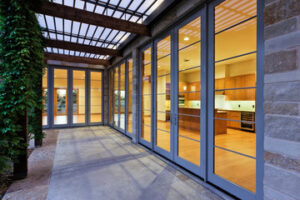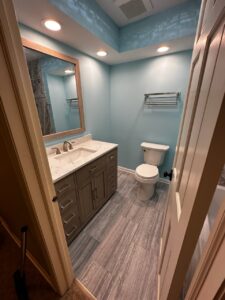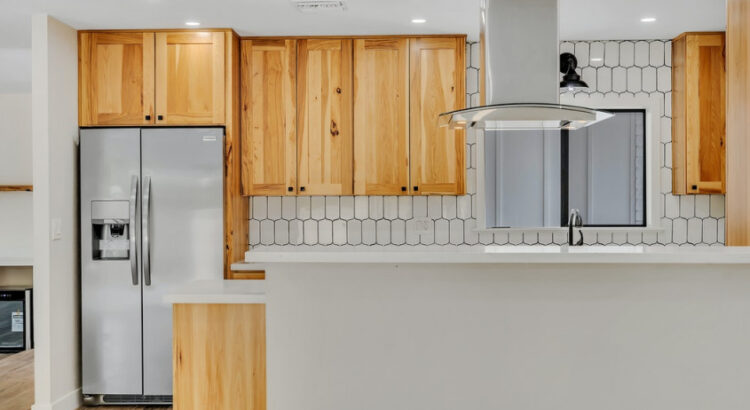Decorative glass doors are the choice of many homeowners and designers looking to add a modern appearance to their homes. They also provide natural light, allowing it to flow throughout the interior of the house.

They can connect indoor and outdoor spaces, letting you keep an eye on the kids in the backyard or entertain guests on the patio. Reinforced frames and deadbolts improve security, making it more difficult for intruders to break in. For professional help, contact experts at Atlanta Glass.
Glass doors seamlessly integrate into various design schemes, fostering a sense of continuity and connection between spaces. Their transparency also helps rooms feel larger, and they can be used as room dividers or as transitional features between indoor and outdoor areas.
Glass interior doors can be purchased as slabs or prehung units, with or without frames. They can be crafted from a variety of materials, offering unique aesthetics to suit individual design preferences and budgets. Wooden frames impart a traditional, classic appearance, while aluminum offers a modern and polished look. Framed glass doors can be opened and closed by sliding them along a track, while slab doors operate more like traditional hinged doors.
The transparent nature of glass interior doors allows natural light to pour into a space, brightening up the atmosphere and making it more comfortable. Additionally, it cuts down on electricity costs by reducing the need for artificial lighting throughout the day.
Sliding glass doors are a popular choice for residential homes as they offer a sleek and modern appearance, which pairs well with contemporary design styles. They can be fitted with a variety of hardware, including handle sets and mortise locks, to ensure security and ease of use.
In office environments, glass doors can foster a more open and collaborative culture by visually connecting different areas of a room or office. They can also allow for unobstructed sightlines, making workspaces more open and inviting for guests and clients. Moreover, they can help reduce the amount of privacy required for private meetings and collaborations.
Lastly, glass interior doors can be used as room dividers to make smaller spaces feel more spacious and provide ample opportunity for sunlight to enter the area. This can significantly improve the overall ambiance of a home or commercial environment, and it can be especially beneficial in areas with limited windows or that experience extreme weather conditions.
Glass doors can be personalized in a number of ways, such as by using decorative films or by etching or engraving the surface. This customization allows individuals to add a personal touch and create a one-of-a-kind piece that reflects their personality and complements the design of their home or office.
Security
Glass doors offer many advantages for homes, such as letting in lots of natural light and offering a view outside. However, this type of door can also present security risks. Thieves can easily break glass and reach into a home to steal valuables or cause other harm. To combat this, homeowners and businesses can make simple upgrades to increase the security of their glass doors.
One way to improve the security of your glass door is to install a camera above it. This will allow you to see what a thief is up to, and may deter them from breaking into your home or business at all. Some cameras even have the option to send a notification to your phone and let you speak to the thief, possibly scaring them away.
Another simple security upgrade is installing a secondary lock on your sliding glass door. This will require little time and effort, but it can significantly increase the security of your glass doors. Some people choose to use a sliding bolt lock, which is more effective in keeping out burglars than a loop lock.
Reinforced glass, also known as security glass, is much stronger than regular glass and can withstand more impact from a blow. It’s available in different thicknesses, from 4 – 15 mils, and it’s an affordable and easy-to-install solution for increasing the security of your glass doors. Security film is an alternative to reinforced glass, which can be used on existing windows and doors. It creates a layer that prevents the glass from shattering when hit, and it can also help insulate a room and reduce energy costs.
The most traditional ways to fortify glass doors and windows against forced entry and other threats are metal bars and grates, but these can be unsightly and detract from the aesthetic of a building or residence. For this reason, they’re typically only an option for buildings where appearance is less important, such as 24-hour convenience stores and liquor stores.
A better option is to replace the glass in your commercial door with bullet-resistant glass panels. These are made of polycarbonate and are 250 times stronger than standard glass, making them virtually unbreakable. They’ve been tested against a wide range of weapons and blunt force objects, and they’re easy to mount on the frames of existing doors and windows.
Aesthetics
Interior glass doors elevate a home’s aesthetics by creating a seamless transition between rooms. Their transparency allows natural light to filter through, illuminating interiors and fostering an ambiance of openness. They also seamlessly merge indoor and outdoor spaces, blurring boundaries and creating a harmonious flow. This combination of functionality with style makes glass doors a popular choice for modern homes. Moreover, they’re also suitable for various design themes, fitting effortlessly into contemporary minimalist and classic settings alike.
Modern glass doors come in a range of different styles and materials to suit the individual needs of homeowners. For example, they can be framed or frameless, and have options such as frosted and tinted glass to provide privacy. Additionally, they can be equipped with smart technology to control opacity as needed. In addition, they can be paired with timber or steel function door frames to complement the look of the space.
Regardless of their type and material, glass doors provide an unparalleled sense of style to any home or commercial space. Whether they’re framed or frameless, they are designed with a sleek and minimal aesthetic that blends seamlessly into any architectural theme. In addition, glass doors are available in a wide range of finishes and colours, which can be tailored to match the unique look of the space.
Another reason why glass doors are so popular is that they allow for a greater amount of natural light to enter the space, which is important for both health and aesthetics. Studies have shown that natural lighting can increase vitamin D levels, alleviate seasonal depression, and boost productivity. In addition, it can reduce the need for artificial lighting and help to lower energy costs.
While there are many benefits of glass doors, it’s important to keep in mind that they can negatively affect a home’s thermal comfort if not properly insulated. To avoid this, it’s a good idea to choose double or triple-glazed glass with low-emissivity coatings and gas-filling (typically argon) to improve their insulation. In addition, insulated glass doors should be fitted with metal frames to ensure a tight seal and prevent cold air from entering the living spaces.
Customization
The design options when it comes to glass doors are nearly endless. From frosted and tinted glass to decorative films, etching, and engraving, there are many ways to make a one-of-a-kind door that perfectly suits your style preferences. You can also customize the frame to match your interior or exterior design scheme. The right frame material can impart a sleek metallic finish, a warm wooden tone, or a vibrant color.
Upgrading an existing glass door can be as simple as adding a decorative film or frosting to provide privacy and aesthetic appeal, or as complex as changing the lock or handle. Glass door installation experts can help you determine the best treatment for your home or office in Metro Atlanta. They can also help you upgrade to insulated glass, which improves energy efficiency by reflecting the sun’s heat back into the room, decreasing cooling costs in the summer and reducing your reliance on air conditioning.
Another way to personalize glass doors is by adding a pattern or piece of artwork. These can be etched or digitally printed directly onto the surface of the glass, creating a unique and artistic statement that will impress guests and visitors alike. These glass doors can be a great option for a residential setting, as well as for businesses that want to set themselves apart from their competition and create a memorable first impression on visitors.
Customized glass doors are easy to clean and maintain, making them a perfect option for high-traffic areas. The glass is durable and resilient, ensuring that your doors will stand up to the test of time. Additionally, tempered glass is extremely safe and will protect against any potential breakage.
Glass interior doors are a great option for any home or business, as they can add light and style to any space. They are available as slabs or prehung units and can be installed with a variety of hardware. The most important thing to keep in mind when choosing a glass door is the desired level of privacy and aesthetics. A homeowner can choose a frosted door with a pattern that fits their taste, or they can opt for a true divided light design to show off the beauty of the door.






